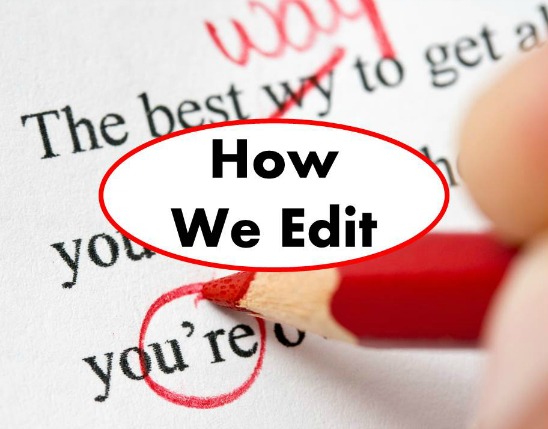Copyeditors must know their grammar.
That seems obvious. But it’s not enough for copyeditors to know the rules of grammar; we must have editorial judgment on how and when to apply those rules.
In Making Sense: The Glamorous Story of English Grammar, David Crystal explains how little we understand grammar, at least partially because we’re taught the what but not the why of grammar. We can’t learn grammar in a vacuum, he says; we need context to make sense of it.
This is even more true for copyeditors, who must not only identify problems but also determine how—and even whether—they should be fixed.
The Three-Part Correction
Whether you’re teaching a copyediting class or mentoring a colleague, you want to do more than just indicate work as right or wrong. Pointing to a few right edits can encourage your student. Going further and briefly telling them why it’s right helps them repeat the edit in future manuscripts.
Mostly, though, editors are charged with pointing out errors. Students or mentees will benefit most when you tell them:
- What the error is or why it’s wrong
- Where their thinking went awry or the result of their incorrect decision
- One way to fix it, being careful not to say that there’s only one way to do so
In doing so, you’ll help them build their own editorial judgment.
Get writing advice straight in your inbox.
Sign up for Right Touch Editing’s emails!
Let’s take this sentence as an example:
As the arbiter for customer insight and data, it is marketing’s responsibility to ensure the voice of the customer is carried throughout the organization, especially when enabling the sales organization.
The problem seems easy enough: As the arbiter for customer insight and data is a misplaced modifier. It’s modifying the subject it, but it stands for ensuring the voice of the customer is carried … The act of ensuring isn’t an arbiter; marketers, referred to here as marketing, are.
If I only highlight a part of the sentence and say “fix,” will my student know what to fix? What if I say “misplaced modifier”: will the student be able to correctly identify the modifier’s correct object? And if I offer a rewrite with no explanation, will they know what the problem is?
I need to do all three. It doesn’t need to be a lengthy comment, either:
Misplaced modifier; “arbiter “should modify “marketing” but instead modifies “ensuring the voice” … Try: “As the arbiter for customer insight and data, marketing must ensure the voice …”
By copying and pasting, using keyboard shortcuts, and using text-expanding software, this is a quick comment to write.
When to Stay the Red Pen
It’s true: sometimes we should leave grammar errors alone: rules can be broken for effect. Witness the “Got Milk?” campaign from the Milk Processor Education Program. Many people bristle at any use of got, but it’s a grammatical and useful word, even if it’s somewhat casual. The problem with “Got Milk?” is that got needs an auxiliary verb: [Have you] got [any] milk?
But that doesn’t sound as snappy, and “Got milk?”—in all of its grammatical incorrectness—gets our attention. It gets it so well, in fact, that the tagline was used for 21 years—several lifetimes in advertising.
If your student had changed “Got milk?” to “Do you have any milk?” your correction needs go beyond “stet.” Again, using the three-part correction:
Stet. While ungrammatical, “got milk” is intentional; it has a strong rhythm and a casual feel that makes it easy to remember
It’s not just the application of grammar rules that we need to teach but when to apply them, why we apply them, and how we apply them.
When we do that, we’ll teach our editing students more than just grammar. We’ll teach them editorial judgment.
A version of this article originally published on September 15, 2017, on Copyediting.



One thoughts on “Teaching Editors: Developing Editorial Judgment”